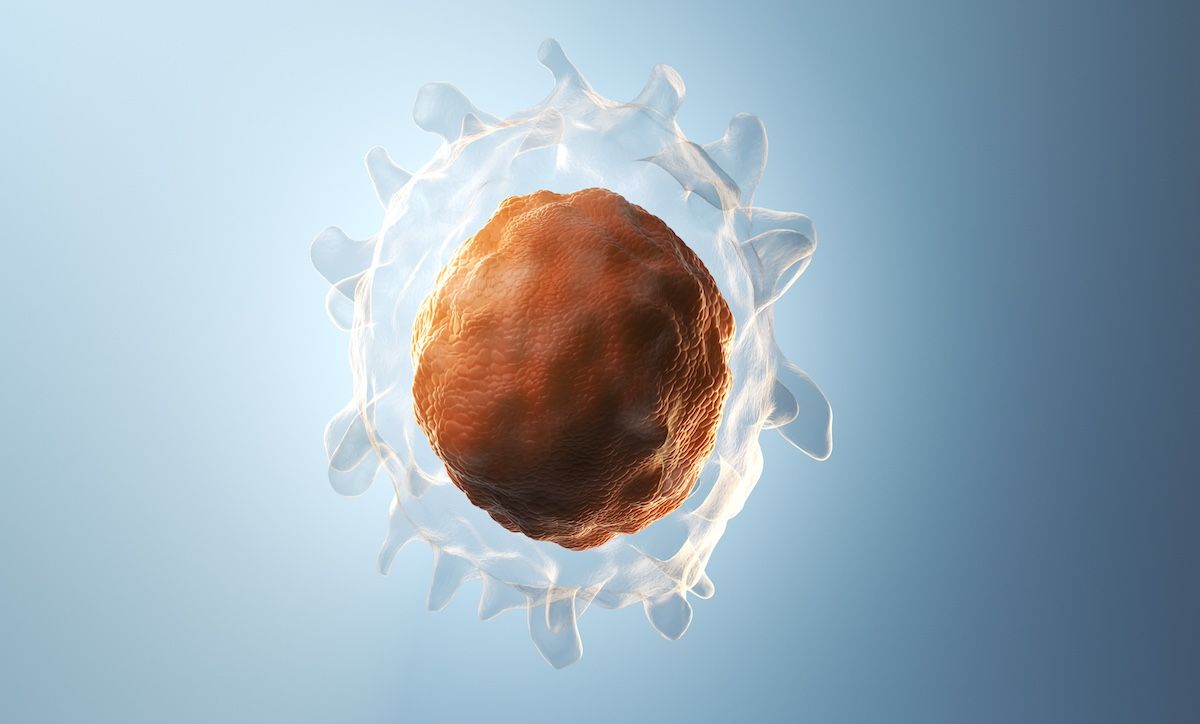- Center on Health Equity & Access
- Clinical
- Health Care Cost
- Health Care Delivery
- Insurance
- Policy
- Technology
- Value-Based Care
Research Unveils UGT2B17 as Key Prognostic Marker in CLL
UGT2B17, a metabolic enzyme known for regulating various endogenous molecules, has been identified to have heightened expression in the B cells of patients who have chronic lymphocytic leukemia (CLL).
In a study recently published in BMC Cancer,1 researchers uncovered critical insights into the role of the UGT2B17 enzyme as a prognostic factor in chronic lymphocytic leukemia (CLL), a finding that may significantly impact future therapeutic approaches and patient management strategies.
This study uncovered a unique facet of UGT2B17 regulation, revealing that its transcriptional behavior in B cells is notably different from that in the liver and gastrointestinal tract. Importantly, around 30% to 40% of patients with CLL exhibit UGT2B17 expression nearly 2-fold higher in their B cells compared with normal B cells. This distinct elevation suggests a more aggressive CLL subtype and a decrease in both treatment-free and overall survival rates, irrespective of other prognostic markers.2
Researchers discovered that the UGT2B17 enzyme's expression in B cells is encoded by alternative transcripts, predominantly expressed in the cells of patients who have CLL. These findings are based on analyses of chromatin accessibility, transcription factor binding, and RNA sequencing data across cohorts of patients with CLL and leukemic cell models.
A principal finding of this study is tha upregulation of UGT2B17 in B-CLL might be linked to epigenetic reactivation of transcriptional regulatory sequences derived from transposable elements | Image Credit: sebastianlaulitzki - stock.adobe.com

Chromatin accessibility studies and transcriptome analyses identified 3 alternative transcripts as key players in B cell CLL (B-CLL): UGT2B17_n2, UGT2B17_n3, and UGT2B17_n4. The study outlines the transcript variants and identifies the transcription factors orchestrating UGT2B17 expression in CLL. Through luciferase assays, electrophoretic mobility shift assays, and pharmacological inhibition experiments, the study investigators found that the transcription factors NF-κB, STAT3, and IRF1 are critical in regulating UGT2B17. Pharmacological inhibition of NF-κB and STAT3 reduced UGT2B17 mRNA expression and significantly decreased the enzyme's activity in leukemic cell models, providing further evidence of their involvement in these pathways.
The study found weak associations between UGT2B17 expression and NF-κB subunits and STAT3 in the International Cancer Genome Consortium CLL cohort, a large and diverse cohort of patients who have CLL, but a significant relationship with their transcriptional activity. The expression of IRF1, although not positively correlated with UGT2B17 expression, showed a significant association with its transcriptional activity and several IRF1 gene targets, suggesting that the IRF family might coregulate UGT2B17 expression in CLL. Poor survival rates have been linked to the high expression of IRFs (IRF2, IRF5, IRF6) in B-CLL cells.
The study also suggests that the upregulation of UGT2B17 in B-CLL might be linked to epigenetic reactivation of transcriptional regulatory sequences derived from transposable elements, notably endogenous retroviruses, which are often silenced in normal cells but may be reactivated in cancer cells. The activation of retroelements is increasingly implicated in immune surveillance against human cancers. Recent studies suggest that some transposable elements transcribed and translated could be tumor-specific antigens.
The practical implications of this study could be significant. The researchers propose that UGT2B17 could serve as a predictive marker for CLL treatment response. The high expression of this enzyme could potentially identify patients less likely to respond to conventional antileukemic therapies, such as fludarabine, thereby guiding clinicians towards alternative treatment strategies.
The authors' conclusion underscores the potential therapeutic applications of this study.
They state, "This study evidenced a B-cell–specific regulation of UGT2B17 expression characterized by alternative promoters regulated by prosurvival transcription factors involved in CLL progression and patient's survival. Understanding the mechanisms that control UGT2B17 expression in leukemic B cells may provide novel therapeutic approaches in treatment-naïve CLL patients as well as in patients resistant to antileukemic treatments."
References
1. Rouleau M, Villeneuve L, Allain EP, et al. Non-canonical transcriptional regulation of the poor prognostic factor UGT2B17 in chronic lymphocytic leukemic and normal B cells.BMC Cancer. 2024;24(1):410. doi:10.1186/s12885-024-12143-7
2. Gruber M, Bellemare J, Hoermann G, et al. Overexpression of uridine diphospho glucuronosyltransferase 2B17 in high-risk chronic lymphocytic leukemia. Blood. 2013;121(7):1175-1183. doi:10.1182/blood-2012-08-447359
